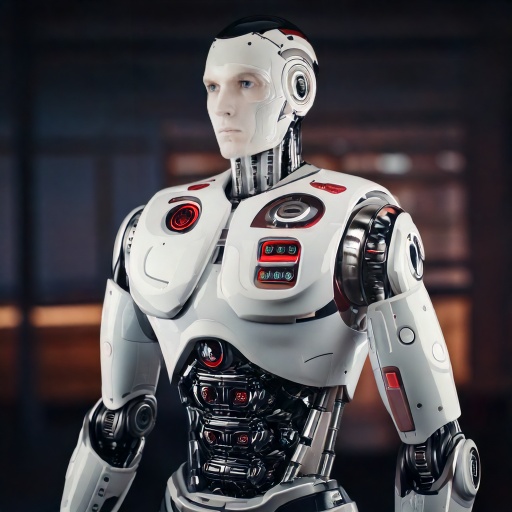LimX Dynamics Unveils Hybrid Robot W1: The Future of Non-Human Workers

In a groundbreaking development, LimX Dynamics, a Chinese robotics company, has introduced the world to its latest creation, the W1, a four-legged robot equipped with wheels at the ends of its legs. This innovative robot seamlessly combines walking and wheeled locomotion, conquering obstacles, stairs, and various terrains. With a built-in surface detection system, the W1 autonomously switches between different modes of movement, dynamically adjusting its height and body angle as it goes. You can watch a video presentation of the robot on the company's YouTube channel.
The significance of this unveiling lies in the quest to optimize the capabilities of non-human workers, often referred to as digital employees or intelligent agents. For over a decade, companies have been developing walking robots, which offer enhanced off-road mobility compared to their wheeled counterparts. However, walking robots tend to lag in terms of speed and energy efficiency on relatively flat surfaces. To bridge this gap, engineers have been crafting hybrid models that combine both legs and wheels. Notably, Swiss engineers were pioneers in this domain, introducing the ANYmal, a four-legged robot equipped with wheels at the end of its limbs, and the concept has since been adopted by other companies.
LimX Dynamics' W1 features four backward-bending knees on its legs, each equipped with a wheel driven by an electric motor. This design allows the robot to fluidly alternate between walking and wheeling modes, adjusting to the terrain's demands. The W1 can surmount ledges, ascend and descend stairs, and even flex its front or rear legs to maintain a level body on inclined surfaces, making it versatile for tasks like carrying unsecured loads. While on wheels, the robot can dynamically adjust its body height to pass through low obstacles, utilizing its legs as shock absorbers, mitigating the impact of rough terrain on its body and cargo.
The impact of LimX Dynamics' W1 reaches beyond robotics enthusiasts, as it presents a promising direction for the future of non-human workers in various industries, from logistics to construction. The company plans to accept pre-orders for the W1 later this year, promising further details on the robot's specifications and pricing. Engineers aren't only enhancing the physical attributes of these robots; they are also perfecting their algorithms, as seen with Swiss-Mile's four-legged robot, which can balance on its hind wheels, leaving its front limbs free for object manipulation tasks, such as opening doors or moving boxes. This fusion of hardware and software innovation is a testament to the exciting advancements in the field of non-human workers, heralding a new era of automation and efficiency.
Key Highlights:
- LimX Dynamics' Innovative Creation: Chinese company LimX Dynamics introduces the world to the W1, a remarkable four-legged robot with wheels at the ends of its legs, blending walking and wheeled locomotion seamlessly.
- Autonomous Adaptation: The W1 boasts a built-in surface detection system, enabling it to autonomously switch between walking and wheeling modes while dynamically adjusting its height and body angle to tackle different terrains and obstacles.
- Hybrid Robotics: This innovation represents a milestone in the evolution of robotic technology, as engineers have been pursuing hybrid models that combine the advantages of both legged and wheeled robots to optimize performance across diverse surfaces.
- Versatile Mobility: The W1 can traverse challenging terrain, surmount ledges, and navigate stairs, making it a versatile tool for various applications, including the transportation of unsecured loads.
- Elevating Non-Human Workers: The introduction of the W1 signifies a significant step in the development of non-human workers, often referred to as digital employees or intelligent agents, which have applications across industries such as logistics, construction, and more.
- Algorithmic Advancements: Alongside the hardware innovations, advancements in robot algorithms are on the rise, as seen with Swiss-Mile's four-legged robot, which can balance on its hind wheels while using its front limbs for manipulation tasks.
- Automation and Efficiency: These breakthroughs in both hardware and software underscore the exciting progress in the realm of non-human workers, promising enhanced automation and efficiency across multiple sectors.
References: [1].


